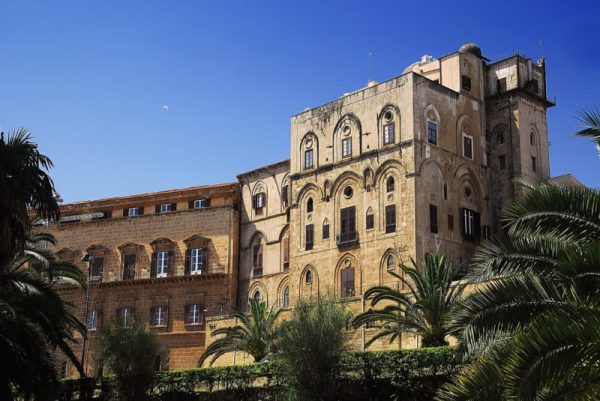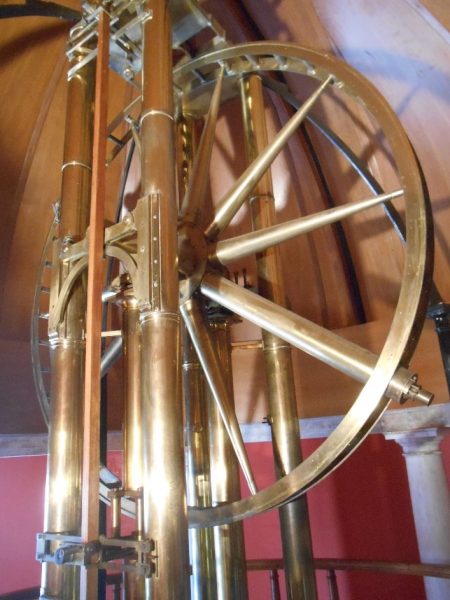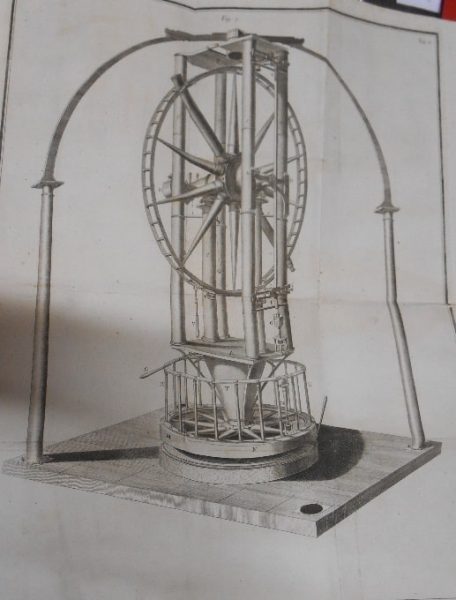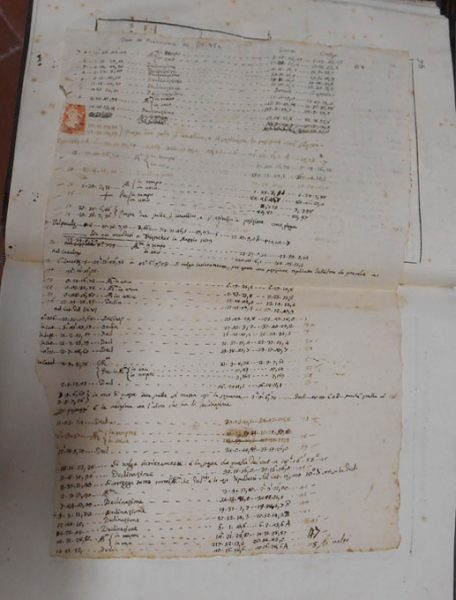Palermo Observatory, Italy

During my motorcycling tours of Italy I’m always looking for astronomical attractions so when my research found Palermo Observatory’s many claims to fame, it became a ‘must-do’ item on the itinerary. However this Observatory is not open to the public; fortunately, Francesco from Central Italian Motorcycle Tours was able to convince them of how keen I was to see the Ramsden Circle so permission was granted.
Early on our last day in Sicily we rode from Masala to Palermo, endured two frustrating delays due to MVAs and finally arrived right on time for our appointment. The Observatory is within the Sicilian Parliamentary precinct and to enter we needed to pass through a full security check.
The Observatory was established in 1790 and occupies the Palazzo dei Normanni, a 9th-century Arab palace converted by the Normans when they invaded in the 11th century. We were very warmly greeted by Laura Baricello & Dr Donatella Randazzo and were treated to a full tour of the Observatory. First stop was the roof to look over Palermo itself.

Palermo Observatory was established by royal assent and Giuseppe Piazzi was appointed as its first astronomer. He had had a modest career to this point but he was soon to make his name. At the time the best astronomical instruments were from England and the best of these were made by Jesse Ramsden. Ramsden was well known for taking a long time to deliver his instruments so Piazzi went to England and literally camped in Ramsden’s workshop until the Circle was made.
Piazzi’s main work was the accurate measurement of stellar positions; something he could expect to improve upon with the 5 foot Ramsden circle he now possessed. In January 1801 his careful observations were rewarded with a new ‘wandering planet’ although, due to the Napoleonic Wars, it took some time for the astronomical community to be able to find and confirm the new planet.
Piazzi’s career reached its zenith in 1814 when he published his second-star catalogue; it contained 7,646 stars mapped with unprecedented precision (Flamsteed’s catalogue contained fewer than 3000 stars). Piazzi was not blessed with good health and he was replaced in 1817 by his assistant Niccolo Cacciatore. His claim to fame is altogether different. He broke with the tradition and named two stars after himself although he went to some length to conceal this act. When the Palermo Catalogue was published in 1814, two 4th magnitude stars alpha and beta Delphini were named as ‘Sualocin’ and ‘Rotanev’. Englishman Thomas Webb finally deciphered these names as the reversed Latinised names of Niccolo Cacciatore!
 |
 |
It is one thing entirely to read about these events but it was both very special and very personal to have Dr Donatella Randazzo, Palermo Observatory’s Librarian, relate these stories while showing us not only the historical instruments used by Piazzi and Cacciatore but also their actual observational worksheets and the drawings of the Ramsden Circle!This visit was not only a highlight of our trip but also an outstanding opportunity to see where and how these famous astronomers executed their work. We were most grateful for this unscheduled tour and did our best to convey our sincere thanks to Dr Randazzo.





